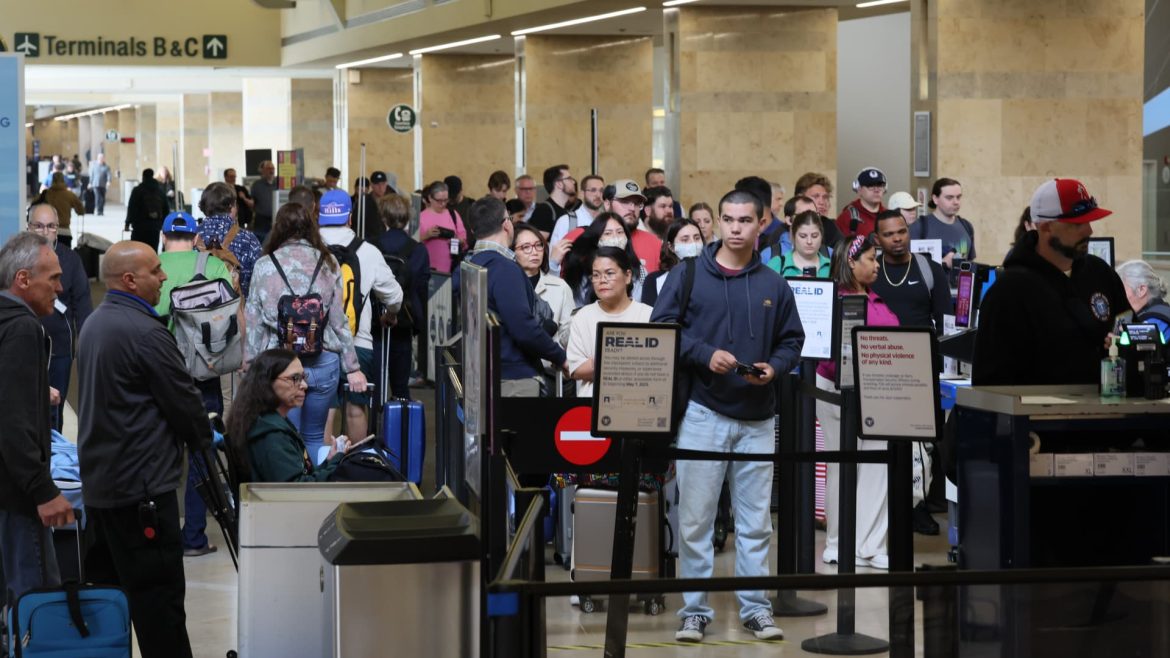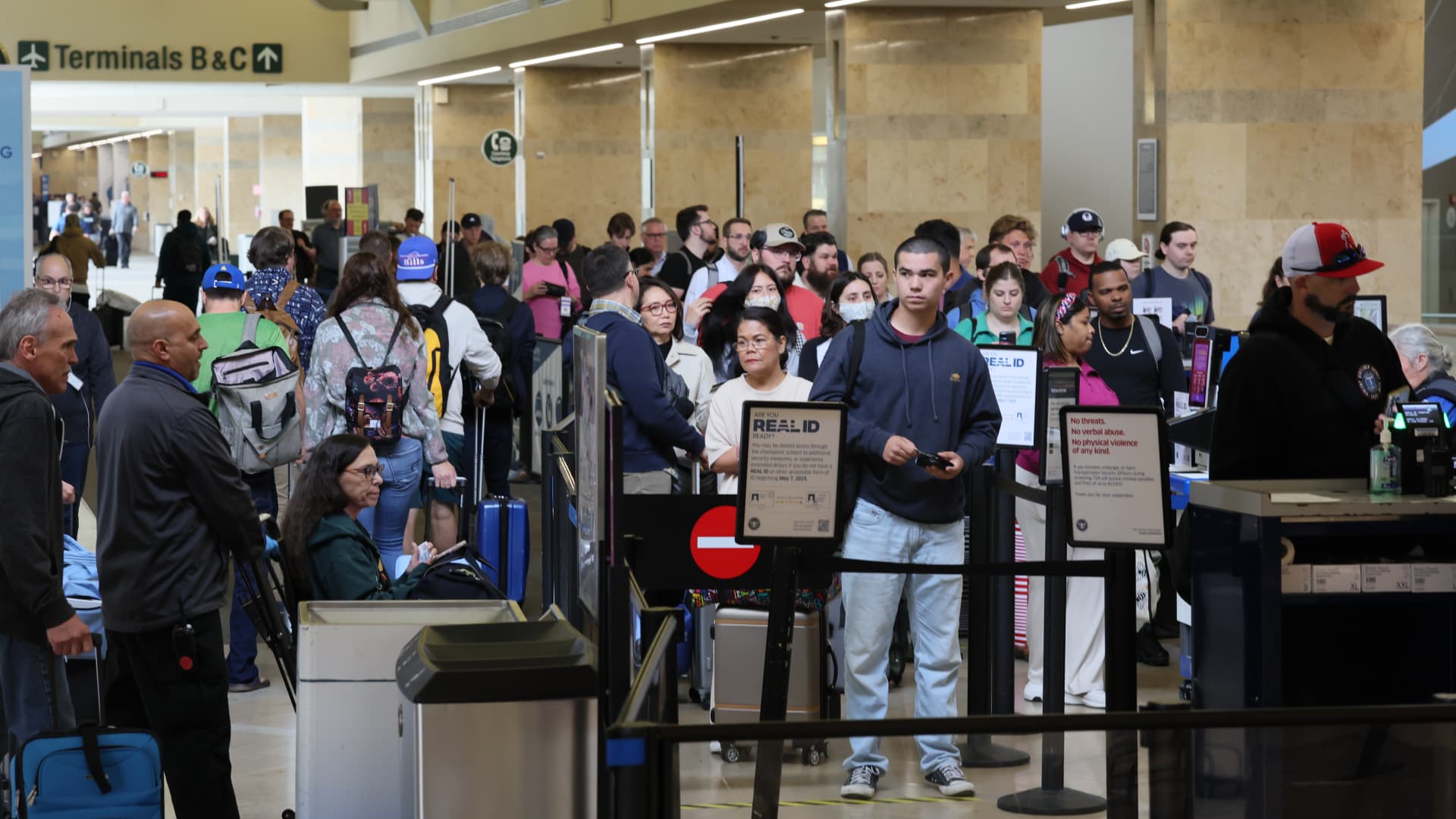The Transportation Security Administration (TSA) is on the verge of a significant policy shift that could mark the end of an era for air travelers. For nearly two decades, the ritual of removing shoes at airport security checkpoints has been a universal experience, a remnant of a specific threat that reshaped aviation security. However, the TSA is now planning to allow travelers to keep their shoes on during standard screenings at many major airports, a move that reflects advancements in technology and a more nuanced approach to risk assessment.
A Step Forward: The Impending Policy Change
The TSA’s decision to relax the shoe removal policy is a response to evolving security needs and technological advancements. Multiple sources confirm that this change is imminent, though the exact details of the rollout remain somewhat unclear. Reports suggest that the policy will be implemented in phases, with varying levels of enforcement at different airports. The general consensus, however, is that the TSA is moving towards a more streamlined and passenger-friendly approach to security.
This shift is particularly significant given the historical context of the shoe removal requirement. The policy was implemented in the wake of the 2001 “shoe bomber” incident, where Richard Reid attempted to detonate explosives hidden in his shoes aboard a transatlantic flight. The TSA, formed in the aftermath of 9/11, introduced enhanced security protocols, including the mandatory removal of shoes, to prevent similar threats. While effective in its time, the policy has long been a source of frustration for travelers, who often find the process inconvenient and time-consuming.
The History Behind the Barefoot Shuffle
The requirement to remove shoes at airport security checkpoints is deeply rooted in the history of aviation security. The “shoe bomber” incident highlighted a critical vulnerability in existing security measures, prompting the TSA to implement stricter protocols. The policy was designed to ensure that all passengers’ shoes were thoroughly inspected for concealed weapons or explosives, a measure that, while necessary, quickly became a symbol of the inconveniences of air travel.
Over the years, the TSA has made adjustments to the policy, introducing exceptions for certain groups. For example, children under 12 and adults 75 years or older were often exempt from the shoe removal requirement. Additionally, the TSA PreCheck program, a trusted traveler initiative, allowed enrolled members to bypass the shoe removal step, among other benefits. However, for the vast majority of travelers, removing shoes remained a standard part of the security process.
Why Now? Technological Advancements and Evolving Risk Assessment
The decision to relax the shoe removal policy is not arbitrary but rather a result of significant advancements in security technology and a more sophisticated understanding of risk. Several key factors have contributed to this shift:
- Advanced Imaging Technology (AIT): The deployment of AIT scanners, also known as body scanners, has revolutionized the ability to detect concealed objects without requiring physical contact. These scanners can identify both metallic and non-metallic threats hidden under clothing, including in shoes, making manual inspections less necessary.
- Enhanced Explosives Detection Systems (EDS): EDS machines used to screen carry-on baggage have become more sophisticated in detecting explosives and other dangerous materials. This reduces the reliance on manual inspections, including shoe inspections, and allows for a more efficient screening process.
- Behavior Detection and Risk Assessment: The TSA has invested in behavior detection and risk assessment techniques, training officers to identify potentially suspicious individuals and behaviors. This enables security personnel to focus their attention on higher-risk passengers, rather than subjecting every traveler to the same level of scrutiny.
- Data-Driven Intelligence: Continuous analysis of security data and intelligence allows the TSA to adapt its protocols to address emerging threats and vulnerabilities. This ongoing assessment may have revealed that the shoe removal policy, while initially necessary, is no longer the most effective use of resources.
These advancements, combined with a more targeted approach to security, have made it possible for the TSA to relax the shoe removal policy without compromising safety.
The Impact on Travelers: A Smoother Journey
The relaxation of the shoe removal policy is expected to have a significant impact on the passenger experience at airports. By eliminating this step, the TSA can potentially speed up security lines and reduce wait times for travelers. This is particularly beneficial during peak travel periods, when long lines and delays are common.
In addition to reduced wait times, allowing passengers to keep their shoes on will undoubtedly make the security process more comfortable and convenient. No one enjoys walking barefoot on potentially dirty airport floors or fumbling with laces while trying to gather their belongings. By removing this inconvenience, the TSA can help improve passenger morale and create a more positive travel experience.
Furthermore, streamlining the screening process for low-risk passengers allows the TSA to focus its resources and attention on identifying and addressing genuine security threats. This targeted approach not only enhances the overall efficiency of the security process but also ensures that the TSA’s efforts are directed where they are most needed.
Potential Challenges and Considerations
While the relaxation of the shoe removal policy is generally seen as a positive development, it is important to acknowledge that there may be some challenges and considerations. A smooth and consistent rollout of the new policy is crucial. The TSA needs to clearly communicate the changes to both its officers and the traveling public to avoid confusion and frustration.
There may still be situations where TSA officers require passengers to remove their shoes, such as when a potential threat is detected or when a passenger is selected for additional screening. It is important for the TSA to provide clear guidelines on when these exceptions apply to ensure consistency and fairness in the screening process.
Maintaining public trust and confidence in its security measures is also paramount. The TSA needs to communicate the rationale behind the policy change and demonstrate that it is not compromising safety. Transparency and clear communication will be key in ensuring that travelers understand the reasons behind the shift and feel confident in the security measures in place.
Finally, the TSA must remain adaptable to new threats and vulnerabilities. As security threats evolve, the TSA must be prepared to adjust its protocols accordingly. This may involve re-evaluating the shoe removal policy in the future if new vulnerabilities are identified.
A More Comfortable Future Takes Flight
The impending relaxation of the TSA’s shoe removal policy represents a welcome evolution in airport security. By embracing technological advancements and adopting a more risk-based approach, the TSA can streamline the screening process, enhance the passenger experience, and focus its resources on addressing genuine threats. While challenges may arise during the implementation phase, the potential benefits of this policy change are clear: a more efficient, convenient, and comfortable journey for air travelers.
As we anticipate this change, we can look forward to a future where the simple act of walking through airport security is a little less awkward, a little less hurried, and a whole lot more pleasant. The end of the shoes-off era marks not just a shift in policy but a step forward in the ongoing effort to balance security and convenience in air travel.





